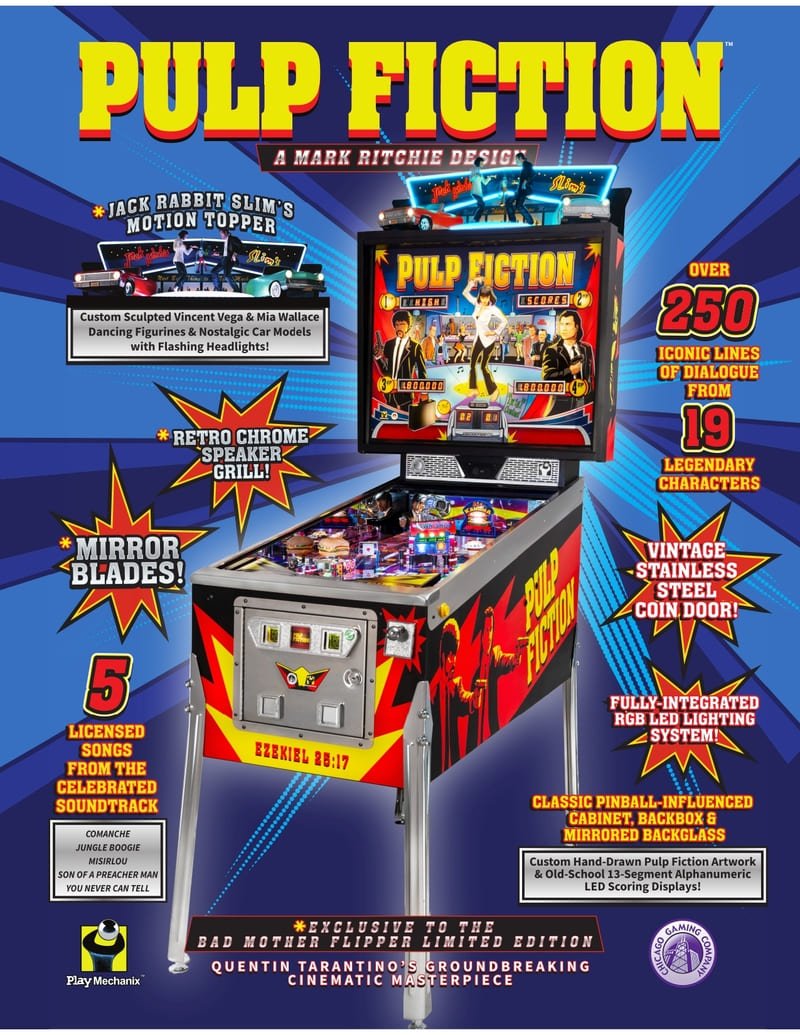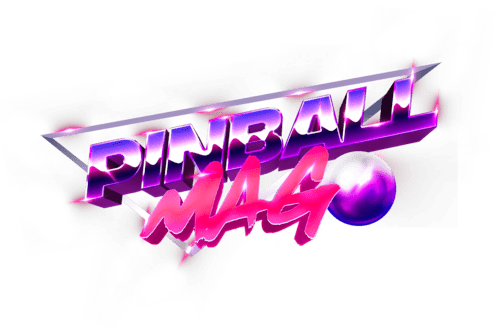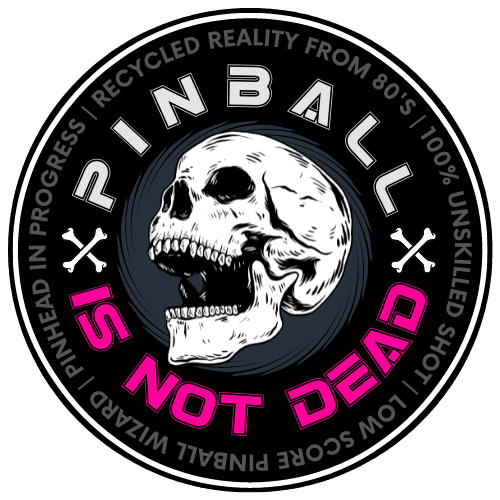Often a consensus emerges from the first images of a pinball machine. For this Pulp Fiction game, this is clearly not the case. And we might as well say it right away, we are part of the people who see a lot of negative points. This will not prevent us from trying to remain constructive in our assessments.
Doing a critical exercise is a subjective process. With the best will, it is humanly impossible to get rid of one’s own tastes, experiences and background. So take this review for what it is: a point of view that wants to be as well argued as possible.
Sommaire
- 1 A surprising release date
- 2 Pulp Fiction: the 4th pinball machine released in March
- 3 A great design team
- 4 KO for the artwork
- 5 Pulp Fiction: an alphanumeric pinball
- 6 A Pulp Fiction license emptied of its subversive character
- 7 A toy that makes Vincent Vega’s eyes shine
- 8 Few accessories, but executed in an exemplary way
- 9 A playfield that might disappoint
- 10 A pinball machine that blows hot and cold
A surprising release date
Chicago Gaming Company released its latest Cactus Canyon remake in August 2021, so 1.5 years before the release of Pulp Fiction. On paper, nothing shocking. Except that many customers have not yet been delivered their Cactus Canyon pinballs, and see with a bad eye this release which would risk to lengthen again the schedules.
The making-of video made by the Straight Down The Middle team gives some explanations for this timing: the concept of this Pulp Fiction pinball machine comes from the Play Mechanix company (originally specialized in arcade games), they are the ones who negotiated the rights with Miramax. They were also in contact with Quentin Tarantino, the director of the film, who gave the overall artistic direction, namely a pinball machine that looks like a 70’s edition.
In the adventure, CGC brought its technical expertise, and is in charge of the production and distribution of the machine. So in concrete terms, the manufacturer didn’t have a complete grip on the deadline, and the fears of the Cactus Canyon buyers seem to be well founded.
Pulp Fiction: the 4th pinball machine released in March
We’ve already mentioned it in other articles, but this month of March sees a lot of pinball machines released, from 4 different manufacturers. How can this machine stand out in this cacophony? Thanks to its iconic license without a doubt, but the retro bias puts it at a disadvantage in the eyes of many players.
Its price nevertheless pleads in its favor because it is significantly lower than the products of Stern Pinball or Jersey Jack Pinball:
- $7,999 for the Special Editions
- 9,499 for the Limited Edition
If we compare the highest end versions from all manufacturers, Pulp Fiction is $3,500 cheaper than Foo Fighters Pinball and $5,500 cheaper than Godfather. Quite a difference!
A great design team
Pulp Fiction Pinball sees Mark Ritchie back in business. It’s been 26 years since he designed a pinball machine, but he’s been a big name in the collective memory for all that time. Mark have worked at Play Mechanix for several years.
The founder of the company, George Petro, worked for Bally/Williams, is credited with the call-outs on several pinball machines including Fish Tales (1992), and the code for Road Kings (1986). In this context, Ritchie and George worked together and later joined Play Mechanix.
As you can see, Mark is in design and George is in code. It’s a great story about a CEO who has a business to run but still takes the time to be involved in a project he cares about.
Josh Sharpe defined the rules of pinball, a role he plays in part on other projects, in addition to his work at Raw Thrills (Play Mechanix partner/subsidiary). Josh is the son of Roger who saved pinball in the 70’s.
Finally, the artwork was drawn by Scott Pikulski, game designer at Play Mechanix. Oops, maybe he’s not up to par with the rest of the gang.
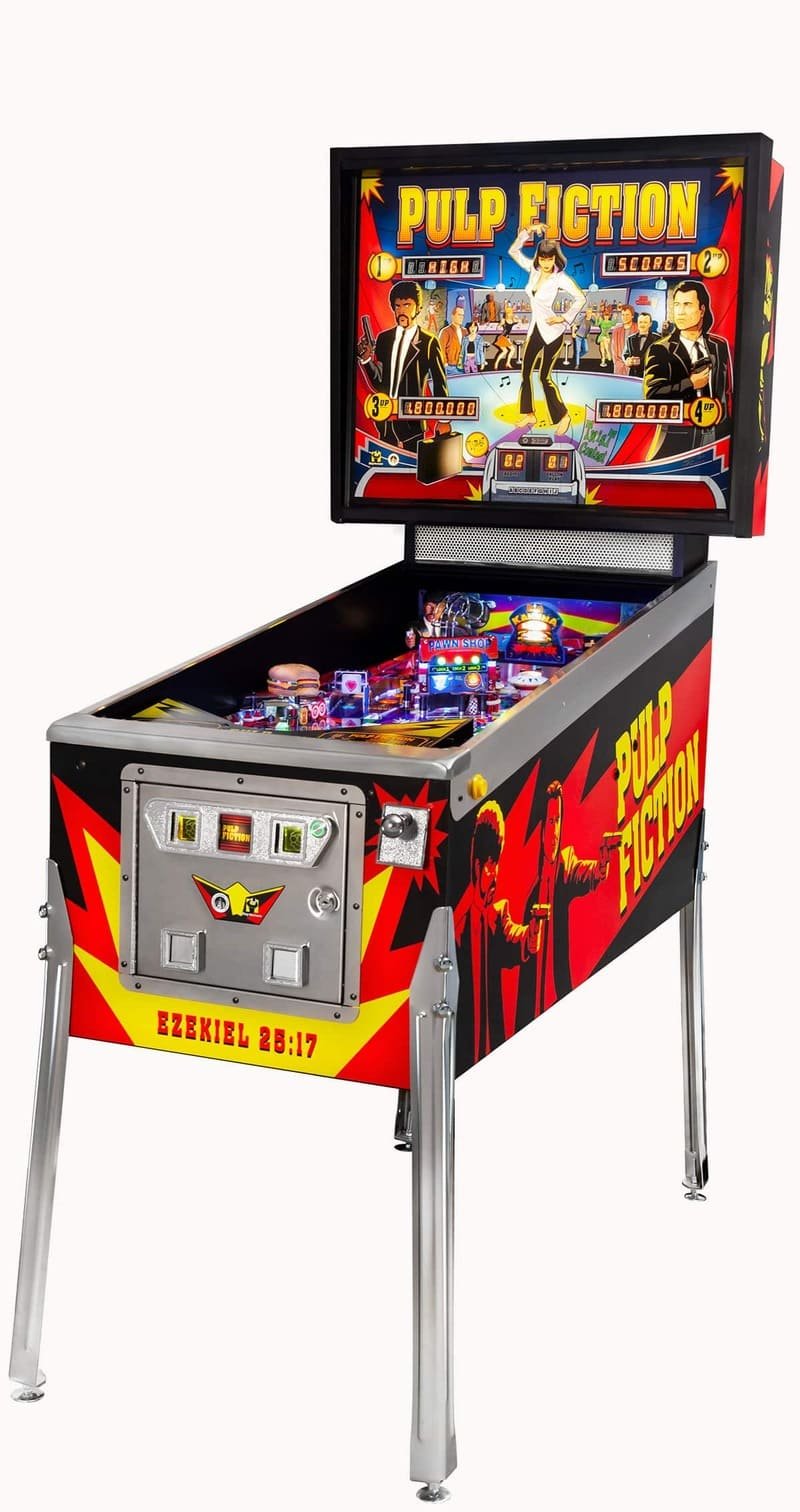


KO for the artwork
Without a doubt, the artwork respects Tarantino’s request to recreate a 70’s look. But it is not successful for all that. The inspiration was not taken from the best examples of the period, one could consider that it evokes rather the simplistic features of the late electromechanics. This is not an anachronism, but a questionable decision.
Moreover, the composition of the playfield does not pay tribute to the license. The revolver catches the eye and puts a big dark inelegant spot in the center of the board, where the artist’s talent should have been expressed.
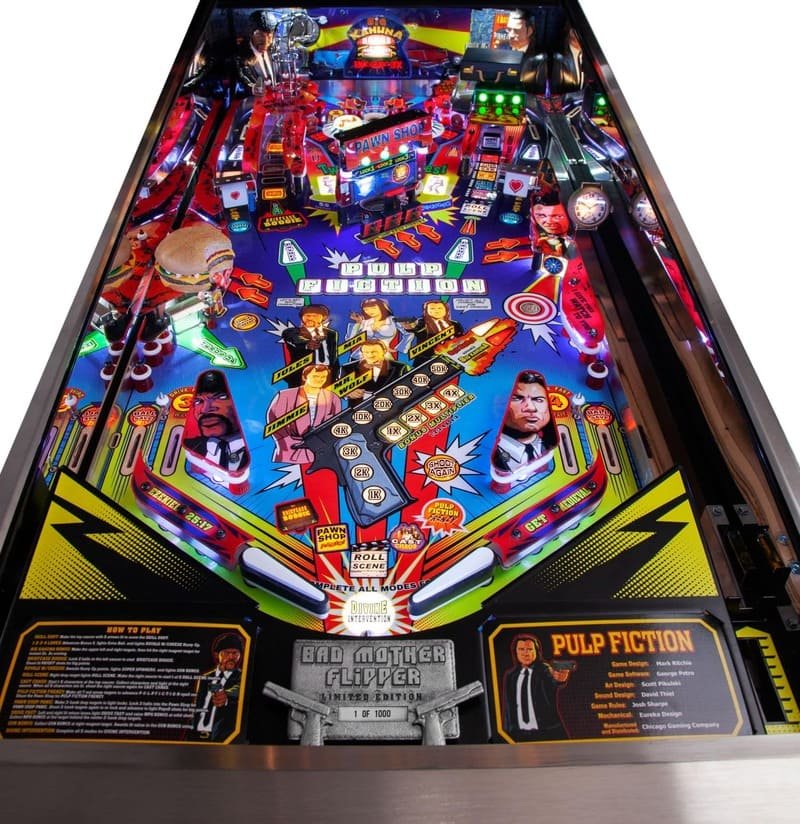

The ultimate crime of lèse-majesté is the face of Uma Thurman (Mia in the film) on the backglass, barely recognizable. Also, her position makes her static when she should be instilling movement.
Having looked at some of Pikulski’s other creations, I wouldn’t blame him. This artwork is in the same vein as the rest of his creations. But the man is probably not the right one for the difficult exercise of “fake retro”.
Pulp Fiction: an alphanumeric pinball
Here we are in deliberate anachronism, like Ben-Hur with a Casio watch (I’m exaggerating my point). The end of the 70’s saw the numeric digital pinball machines. Numeric, not alphanumeric, which would only appear 10 years later.
The difference? The screens of numeric pinball machines only display figures, while the others allow letters. The nuance may seem subtle, but with the appearance of text, games were able to display instructions to players, and thus make the rules more complex.
This choice is obviously assumed. It allows to reconcile the director’s request and the tastes of 21st century players. Most of us are not ready to buy new gameplay that is too light.
To justify this choice and others, the designers explain that they allowed themselves the same liberties with the theme as Tarantino himself did with his film. This one breathes the 70’s, and yet the characters use cell phones.
Still, the brief period of alphanumeric pinball machines was a transition from historical pinball (simple rules, elegant machines) to modern pinball (deep code, light shows). Was it appropriate to position this theme in this somewhat bastardized in-between?
A Pulp Fiction license emptied of its subversive character
Tarantino’s universe is violent and shocking. These are two of his characteristics. Pulp Fiction is no exception to the rule, with Mia’s use of cocaine (it’s actually heroin, but she discovers it later at her own expense), the explosion of brain in the car and the rape scene in the basement.
None of these iconic scenes are included in the pinball machine. The makers want to have their cake (cool theme) and eat it too (no trouble with the moralists). The Deadpool pinball machine had also experienced it.
One understands the constraint linked to the operating in public places, where the age restrictions cannot be respected. But on themes like these, it is time that manufacturers propose a code for individuals and another for operators. I don’t know about you, but I’d be willing to pay extra to get “Director’s Cut” animations and missions.
A toy that makes Vincent Vega’s eyes shine
At the bottom right of the playfield, a closed case is placed in front of Vincent Vega’s (John Travolta) bust. As long as the game has not started, this element goes unnoticed. But in some phases of the game, it turns, faces the character, opens and lights up from the inside, projecting golden reflections on the actor’s face. The effect is very successful!


It is not strictly speaking a toy, as it has no direct interaction with the game, but it clearly helps to set the mood. In the movie, two protagonists open this case which is at the heart of the plot: Vincent Vega and Ringo, the unfortunate robber who doesn’t do so badly after all.
So we have a mechanism that is beautiful, surprising and completely in line with the theme. An excellent point!
Few accessories, but executed in an exemplary way
Well, this is the only element that can really be called a toy. The hamburger and the busts are perfectly still.
The second component that catches the eye is the topper, representing Mia and Vincent dancing for the contest (you see the scene, right?). The two figures rotate, the lighting is perfect, as well as the scenery around and behind them.


Also noteworthy is the nice coin door and the elegant integration of the speakers in the front panel (for the Collector version at least).
Generally speaking, this pinball machine offers little, but what it does offer is of great quality. The level of detail on the hamburger crushes much of the competition, including Stern Pinball, which has too often served up figures not even worthy of a 3D printer (the green Godzilla from the eponymous pinball machine, the Thanos glove from Avengers: Infinity Quests).


By the way, 5 songs from the original soundtrack are present. This is both little and already not bad, like many aspects of this pinball.
A playfield that might disappoint
All of the above has probably obscured the bottom line for many observers. The playfield offers nothing memorable:
- 4 short lanes
- 2 magnets
- a mini ramp connected to a scoop to make the ball disappear in the fronton
- targets, some of them dropping, only one of which holds the ball
Of course, a gameplay is only revealed with the pinball between the paws, but there is a priori no trajectory that causes surprise.
The 3 bumpers are arranged in a triangle like on 80% of the machines from the 70’s, imposing de facto the rest of the playfield architecture as a rehash of what has been seen dozens of times.
I will state what will be for many a heresy, but I assume it completely: the playfield of the James Bond 60th anniversary pinball machine is much more original than the one of Pulp Fiction. Keith Elwin masters convoluted lanes, even flat ones, far better than Mark Ritchie probably ever will (given his age).
Sure, there’s a 1-to-3 ratio on price that makes Pulp Fiction pinball much more attractive, but that’s not what this paragraph is about.
A pinball machine that blows hot and cold
This preview oscillates between positive and negative points, without it being obvious to give a definitive verdict. The machine breathes the taste of work well done with finishes that force the admiration, but the artistic direction as well as the design biases do not do justice to the license. And Tarantino himself bears his share of responsibility!
The collaboration between CGC and Play Mechanix was so intertwined that it’s hard to know exactly what is due to whom. But if I had to take a chance, I’d say that everything that is successful bears the mark of CGC, and the more hazardous Play Mechanix.
We’ll have to judge this on its own merits, but I’m going to be pessimistic.
